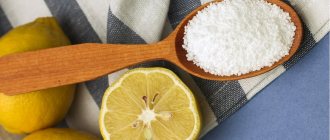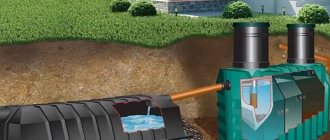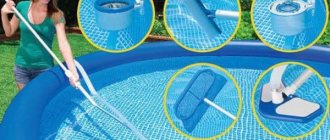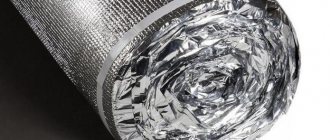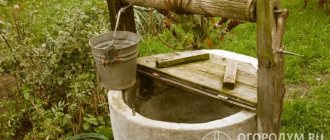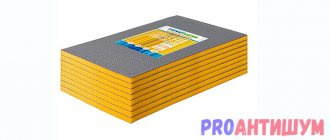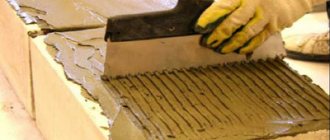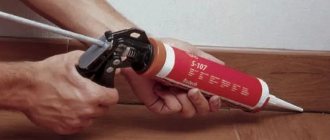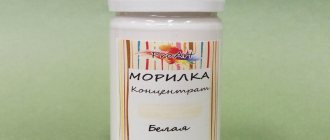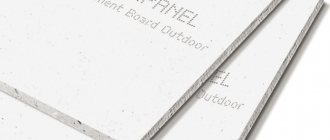Absolutely any car ages, wears out and breaks down during operation. Very often, all these problems are accompanied by the formation of corrosion and rust. That is why it is very important to have in your car first aid kit a product specifically designed to solve this problem. But it is not enough to know about their existence; you need to use the drug correctly and understand what it is for.
In this article we will look at rust solvents that can be used both in cars and at home. In the line you will find any drug that can solve your problem associated with rusting. So, let's go...
How and with what to properly clean metal tools
Tools damaged by rust cannot be used.
For large objects, a mechanical method is used, for example, sandpaper, a wire brush, a scraper or sandblasting.
This processing method is not suitable for small parts. In these cases, it is recommended to use store-bought cleaning products and folk recipes. Special compounds allow you to remove plaque without damaging the surface.
Before you clean rust on metal, you should prepare your tools for processing. If they are severely damaged by corrosion, you will need a steel wool brush for the procedure. For deep damage over a large area, it is recommended to use an electric grinder.
Metal cleaning devices require the use of physical force. In this case, care must be taken not to damage the surface structure. At the end of the work, you need to sand the tools with sandpaper to remove any traces of scratches.
Newspaper dowel
This option was previously used even for hanging carpets of impressive size. To implement this method you need:
- take a newspaper;
- wet the paper;
- twist a paper dowel with a cross-section corresponding to the diameter of the hole in a brick or concrete wall;
- push the “substitute” into the hole with force;
- wrap the self-tapping screw into a homemade “dowel”.
As the paper dries, it will begin to expand due to the air between the layers. It will act like a plastic factory expansion dowel.
Rust solvents for metal products
Treatment with rust solvents allows the tool to return to its original appearance.
Various types of chemicals are used to clean iron objects. Rust solvents are made from acid, zinc oxide or plant components. To get your tools in order, you can try Syntilor Ruggine, Sonax, Liqui, Wurth, etc.
Such products are harmful to the skin, so work should be carried out with protective gloves.
When using chemical compounds, you should adhere to safety precautions:
- Strictly follow the manufacturer's instructions for using the substance.
- Wait the right time for the product to react with the corrosion, and then clean the product.
- Make sure that the drug does not come into contact with the skin and mucous membranes.
- Use solvents only for small items.
Products based on tannins and additives are considered safe, since they do not contain toxic compounds.
Chemical zinc solvents are widely used in the automotive industry. They are also used to prevent corrosion.
Lever arm
This is the first thing you can do if you need to unscrew a rusty nut or capricious bolt. A steel pipe placed on a key is used as a lever device. You should first go over the fasteners and around them thoroughly with a brush with metal bristles. It is better to use a spanner wrench, but in extreme cases an open-end wrench will do. Everything needs to be done carefully. The main thing is not to overdo it. Excessive force is unacceptable, as the result may be a torn bolt head, licked nut ribs or a broken key.
Rust converters for tools
ASTROhim Antiruster is one of the most effective rust converters.
There are products on sale that allow you to stop the oxidation process - these are rust converters, which are available in the form of an aerosol. They are usually used as a primer for painting. Such compositions are made on the basis of orthophosphoric acid. The most common: Fenom, Permatex, ABRO, ASTROhim Antiruster .
These preparations are recommended for use when you plan to coat metal products with paint. They do not remove rust, but only stop the corrosion process.
The advantage of converters is that after they are applied, a special film appears on the surface, protecting against further spread of plaque.
Shearing off a bolt
The alignment/camber adjusting bolts often become sour. The fact is that they need to be lubricated not only at each camber adjustment, but also at zero maintenance. If this is not done, the bolts will become sour. A layer of aluminum oxide can be found on the removed bolts. There may be a situation where the nut unscrews more or less freely, and the bolt rotates together with the silent block and lever, i.e. the bolt sours precisely in the inner bushing of the silent block. In this case you can:
- Heating - the success of this event is not guaranteed, and you will have to spend a lot of time.
- Fill with “weedishka” - if the bolt in the bushing is not too completely soured, this method will help to unscrew it. If necessary, you can leave the bolts overnight or for a day to dry. Then they should be warmed up. After this they usually unscrew.
- Use a construction hammer. First, unscrew the nut and remove the washer. Then screw the nut flush with the bolt. Place a head of appropriate size on the nut. Then, by inserting a lance into the hammer drill, and the lance itself into the head, turn on the hammer drill in impact mode. The bolts are knocked out due to vibration and can later be unscrewed.
- The last method is to saw the bolt in the silent block with a grinder, but there is a risk of damaging the subframe. If you remove the subframe, then such work is very labor-intensive and expensive.
The work is done step by step as follows:
- Having installed the jack and placed some stands under the car for safety, remove the wheel and fist and get to work. You need to cut extremely carefully so as not to cut through the subframe.
- Having sawed off the lever and the eye, pull it out from the inner bushing of the silent block. It is more difficult to cut off the inner bushing with the bolt than the lever, since they are recessed into the subframe and are difficult to reach with a grinder.
- When the bolt has already been sawed, it may turn out that its parts cannot be removed due to a soured bushing. In this case, it is recommended to heat the fastener parts and use a chisel and hammer to help by tapping on the sleeve.
Soured bolts are a headache for motorists. You have to spend time unscrewing them, but if you know in what ways you can unscrew the bolt, the result of the work will be positive.
Kerosene and VD 40 do not help, it is strongly oxidized.
First you need to decide which screw it is with which head.
A screw is significantly different from a bolt; it is screwed into the “body,” in this case aluminum.
The aluminum part has threads.
The bolt goes right through the part at the other end of the nut (this is usually the case, although it can also be screwed into the “body”).
If we really have a screw in front of us, and not a bolt, but there is a head on the surface that you can grab onto, then you can try the following method:
There are such pullers on sale:
Using side blows, lightly tap the screw head.
Next, fill the screw with kerosene (this is the most fluid liquid, it is guaranteed to penetrate between the screw threads and the aluminum).
Attach the puller to the screw head and slowly begin to unscrew the screw counterclockwise.
Household chemicals against corrosion
The easiest way to quickly clean rust from metal is with household chemicals. Manufacturers present relatively safe products at an affordable price. Popular brands include Comet, Pemoklux, Domestos, Cillit , etc.
Manufacturers indicate the composition of the products and recommendations for their use on the packaging. Preparations containing acid should be used with caution to avoid damaging the surface.
The scheme for working with household anti-rust chemicals is as follows:
- A tool or other metal product is cleaned mechanically.
- The surface is wiped with solvent.
- Household chemicals are applied to the product.
- The parts are re-processed with sandpaper.
Zinc chloride helps get rid of signs of corrosion . The substance is mixed with potassium hydrogen tartrate in a ratio of 10:1. Screws, wrenches, and bolts are placed in the prepared solution. Items are left for 2-3 hours. Using tongs, the instruments are removed from the solution. If the need arises, they are cleaned with a stiff brush, then thoroughly washed under running water and dried well.
There is a simple way to remove rust from bolts using hydrochloric or sulfuric acid . For this, a 5% solution is prepared: 0.5 g of hexamine is added to 1 liter of liquid. The metal surface is treated with the resulting mixture.
With deeply ingrained corrosion, the use of household chemicals alone may be ineffective and you will need to combine different methods.
So how does this penetrating oil work?
If you actually thought that the main component for loosening bolts is oil, then we can say with confidence that you are mistaken. On the contrary, the most important task of the liquid is its permeability into the thinnest gaps between the turns of the thread. Because of this, it must be strongly and extremely fluid. If such a liquid had been quite thick in consistency, then nothing would have worked. Look at the video to see how easily this liquid penetrates into a screwed connection:
This high-quality “liquid key” will gradually spill and penetrate in a spiral along the entire length of the bolt, spreading its components over the entire rusted area. After which the main cleaning magic will begin.
And so, the first secret of the “penetrating liquid” is this: it must be sufficiently fluid and with maximum penetrating properties.
Folk remedies for cleaning rust from tools
You can remove rust from metal keys with simple homemade solutions. The following substances are suitable for removing signs of corrosion:
- Table vinegar . Water and acid are mixed in a container in a 1:1 ratio. The instrument is immersed in the liquid for several hours, then the objects are taken out and thoroughly wiped with a dry cloth or rag. Remains of rust are removed with a hard sponge.
- Lemon juice . An effective product that helps dissolve rust that has formed on bolts or other small metal products. The liquid is diluted in equal proportions with water. Instruments are soaked in the mixture for 3-4 hours. If there is no juice, it can be replaced with citric acid.
- Soda . A small amount of water is added to the powder. The resulting slurry is applied to the surface affected by rust and rubbed in with a metal brush. Then the instruments are washed with running water and dried.
- Coca Cola . Helps easily get rid of rust that appears on tools. Objects damaged by corrosion are placed in the liquid and left for several hours, then washed well.
If after using any of the traditional methods there are traces of rust, they must be removed with a stiff brush. Upon completion of treatment with liquid compounds, the instruments must be wiped dry.
Chisel
Here we are not talking about simply cutting off a rusty nut or the head of a tight bolt. With a chisel and one sharp blow of a hammer, you can tear stubborn fasteners out of the tenacious embrace of rust. To do this, you need to point the chisel closer to the edge of the bolt or nut at an angle in the direction opposite to the thread, and then strike sharply and firmly with a hammer. Using this technology, experienced craftsmen masterfully remove any, sometimes even the most hopeless, nut or bolt with one blow. Of course, you still need to grow to such professionalism, but the method works.
Preventing rust
High humidity, temperature changes, and aggressive environmental influences always lead to the formation of corrosion on metal products. For prevention, you must adhere to several rules:
- The instrument should be wiped down after each use. Shovels, rakes and other gardening tools should be cleaned with solvent or kerosene to completely remove residues and plant juices.
- Regularly treat metal objects with special compounds that prevent corrosion.
- Periodically carefully inspect all instruments for damage. Replace damaged parts immediately. At the first sign of rusting, take action immediately.
Particular attention should be paid to those places that are located near the fasteners or blades. They must be cleaned with a stiff wire brush and plain water.
There is no need to throw away an old tool that is covered in rust. There are special products on sale that can restore it to its original appearance and eliminate signs of corrosion. For this purpose, you can also use substances that are always at hand. Getting rid of rust will not take much time, and the service life of the tools will be significantly extended.
Wooden chop
At the preparatory stage, they mark out a place for drilling and create a hole with a drill for durable concrete into which the existing fastening element will fit - a self-tapping screw, a nail, a screw. If there is wallpaper on the wall, it is best to cut it crosswise at the attachment point. Then perform the following actions:
- A blank is prepared from a dry piece of wood. For reliable fastening, the wooden chop must fit tightly in the hole.
- The prepared blank is driven flush or slightly deeper than the plane of the wall.
- The existing fastener is screwed or driven into the cap.
It is recommended to drill the hole at a slight slope from top to bottom. This will allow for a more secure fastening, because the cap will not fall out of the hole, even if its fixation weakens over time.
Warming up
You should try to achieve the desired result by heating the capricious fasteners. Everything will do here - a gas torch, a soldering iron, a pocket lighter. You can even use rags soaked in gasoline or other flammable liquid, but this should be done carefully, following safety rules. Without waiting for the old nut or rusty bolt head to cool down, you need to try to unscrew them. The best choice for these purposes is not an open-end wrench, but a box or socket wrench. If you don’t succeed the first time, you can try combining techniques - tapping well, loosening, using a lever.
